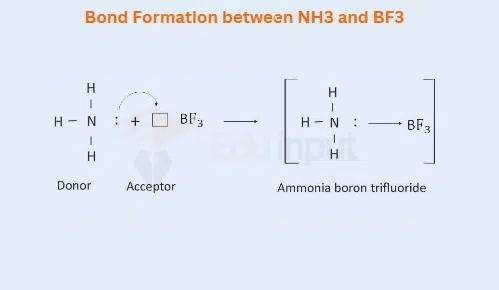Ionic Radius- Periodic trends, examples, Determination
What is Ionic Radii?
The ionic radius can be defined as the distance between the nucleus of an ion and its outermost electron.
This distance can vary depending on the charge and electronic configuration of the ion. For example, a positively charged ion will have a smaller ionic radius than its neutral atom counterpart, since it has lost one or more electrons and its remaining electrons are held more tightly by the nucleus. The ionic radius is measured in nanometers (10 m) or pico-meters (10-12 m).
Example:
Na+ = 95 pm, CI– = 181 pm
Ionic radius Periodic Trend
Ionic radii increase from top to bottom along a group and decrease from left to right in a period. The trend for ionic radius across the periodic table generally follows a predictable pattern. These trends in the ionic radius are important in understanding the behavior of ions in chemical reactions and in predicting the properties of various materials.
ionic radius tends in period
As you move from the left to the right, the ionic radius for cation decreases because the number of protons in the nucleus increases, and this leads to a stronger attraction between the nucleus and the electrons. The ionic radius is smaller because the outermost electrons are being held more tightly.
For anions (negative ions), the ionic radius increases as you move from right to left across a period. The reason behind this is that when an atom gains one or more electrons to form a negative ion, the increased electron-electron repulsion causes the electron cloud to expand, resulting in a larger ionic radius.
| Period 3 | Na2+ | Mg2+ | Al3+ | P3- | S2- | Cl– |
| Number of protons | 11 | 12 | 13 | 15 | 16 | 17 |
| Electronic configuration | 2,8 | 2,8 | 2,8 | 2,8,8 | 2,8,8 | 2,8,8 |
| Ionic radius | 0.102 | 0.072 | 0.054 | 0.212 | 0.184 | 0.181 |
ionic radius tends in group
When moving down a group or column of the periodic table, both cations and anions have an increasing ionic radius. This is due to the addition of a new electron shell as you move down the column, which increases the distance between the outermost electrons and the nucleus.
| Ions | Configuration | Ionic radii(nm) | Ions | Configuration | Ionic radii(nm) |
| Li+ | 2 | 0.076 | F– | 2,8 | 0.133 |
| Na+ | 2,8 | 0.102 | Cl– | 2,8,8 | 0.181 |
| K+ | 2,8,8 | 0.138 | Br– | 2,8,18,8 | 0.196 |
Why cationic radius is always smaller than the parent atomic radius?
Due to the loss of electrons, a cation is smaller than its parent atom. Due to the reduced repulsion between electrons, the nucleus holds the remaining electrons more tightly than before.
A decrease in the distance between the electrons and the nucleus causes the ionic radius to become smaller than the parent atom. The number of protons in the nucleus is the same, but the number of electrons is reduced.
This results in a higher effective nuclear charge, which means that the remaining electrons are attracted more strongly to the nucleus. Losing electrons in the formation of a cation results in a smaller size than the parent atom. The trend can be observed as you move from left to right.
In the case of sodium (Na), the cationic size reduces from 186pm to 95pm.
Na → Na+
186 pm | 95 pm
(11p=11e) | (11p=10e)
The decrease in radius is larger for divalent ions (Mg+2) and still larger for trivalent ions (Al+3).
Why Anionic radius is always larger than the parent atomic radius?
Due to the gain of one or more electrons, an anion is usually larger than its parent atom. The distance between the outermost electrons and the nucleus increases when an atom acquires an electron to form an anion. This results in an increase in the ion’s radius compared to the parent atom.
The electron cloud expands due to the added electron(s) increasing the electron-electron repulsion in the shell. This increases the distance between the nucleus and the outermost electrons, making the anion even larger.
The gain of electrons in the formation of an anion results in a larger size than the parent atom. You can see this trend as you move from right to left across the table.
In the case of chlorine (Cl), anionic size increases from 99pm to 181pm.
CI+ e– → Cl–
99 pm | 181pm
(17p=17e) | (17p=18e)
How to find ionic radius?
To find ionic radius let us consider a positive and a negative ion which is held together by electrostatic forces of attraction in a crystal lattice. The inter-ionic distance ‘R’ and the ionic radii are shown in the figure where r+ and r- are the radii of the two ions in contact with each other.
Determination:
Pauling determined the distance between K+ and Cl– ions in KCI crystal and found that it was equal to the sum of the radii of two ions.
R= r+ + r–
R = 133 pm+181pm = 314pm
The ionic radius appeared to be an additive property. Pauling extended this concept to other K salts and calculated the radii of other ions from the relationship
r– = R = r+
Similarly, ionic radii of different cations can also be determined.







Leave a Reply